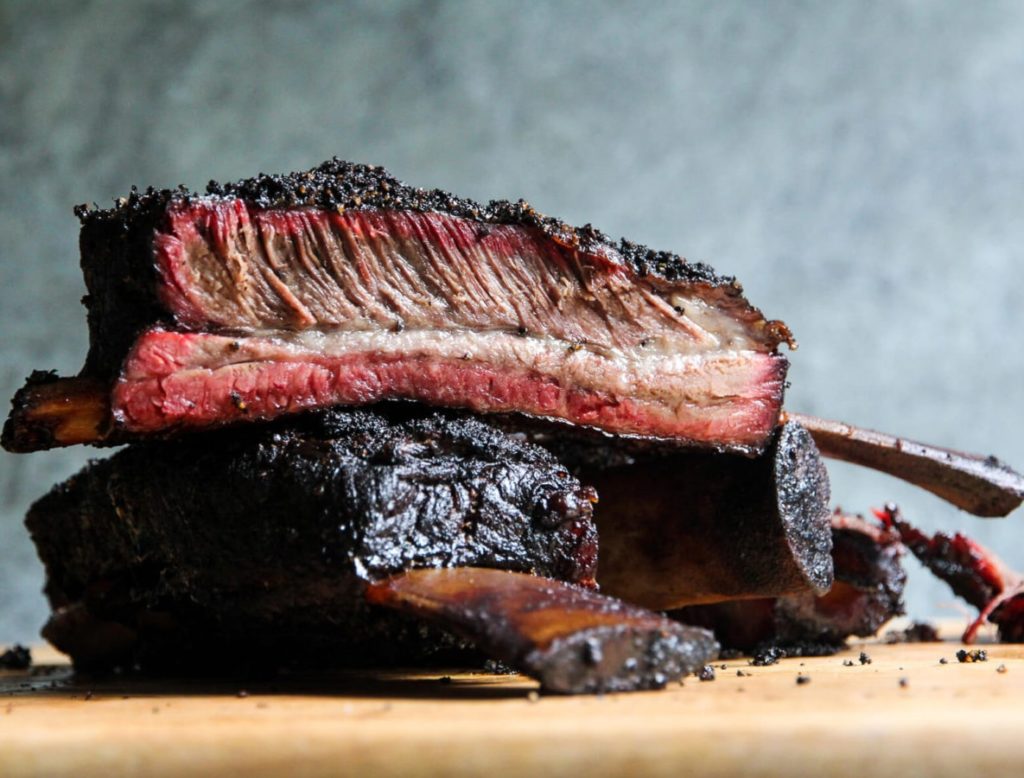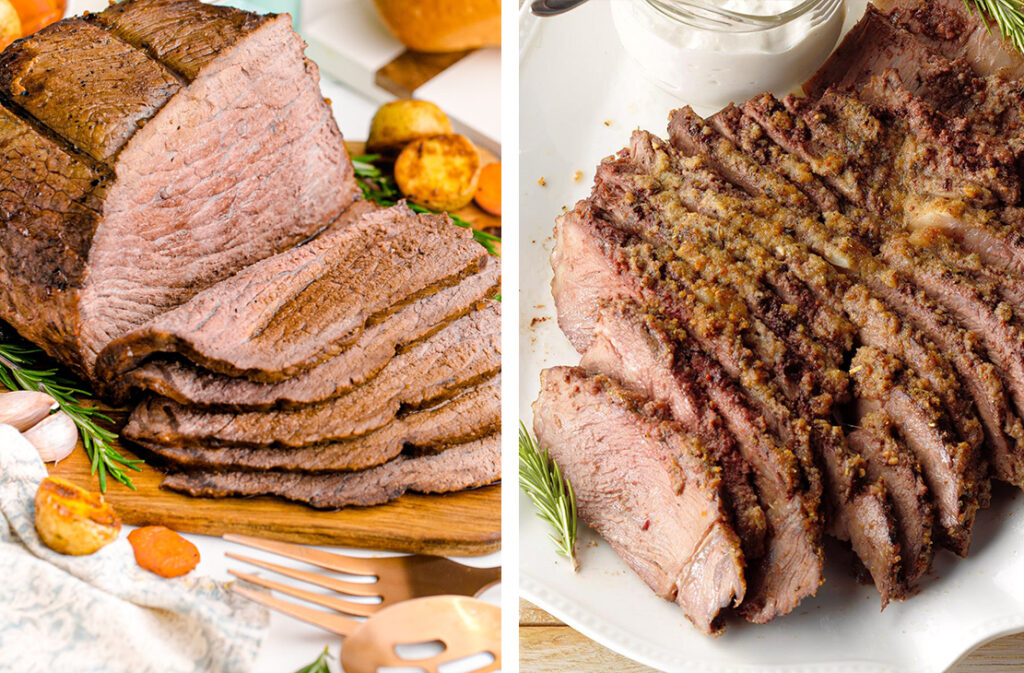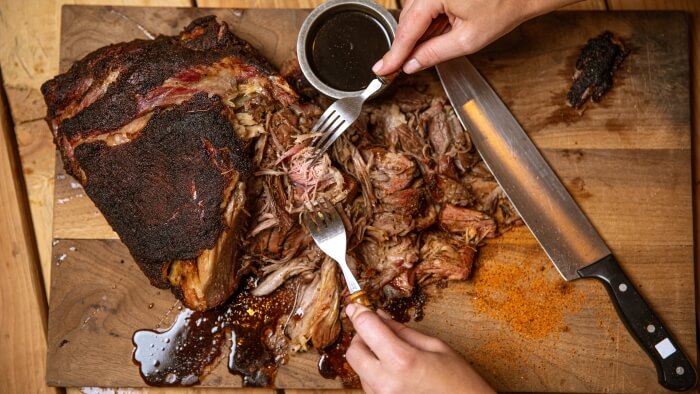
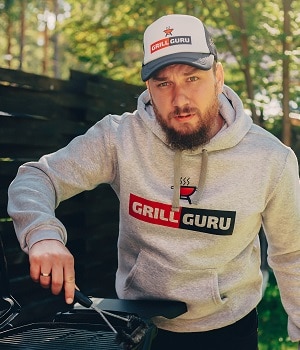
There is something awfully satisfying about running your own grill and having people praise what you make them. This is part of what makes entertaining guests with barbeque made by your hand so appealing to many men.
However, when using a pork butt as the chosen meat for your barbeque, there could be unforeseen problems for you beginners; this potential problem is referred to as a pork butt stall. Contrary to the name, the pork butt is not obtained from the butt; rather, it is a piece of meat gotten from the pig around the shoulder and neck region. It is sometimes called a pork shoulder and is widely considered to be the best cut for fall-apart tender pulled pork barbeque Trusted Source Pork shoulder recipes - BBC Good Food Pork shoulder is a tasty, versatile piece of meat. Our recipes include everything from ramen and curry, to BBQ pulled pork and a simple Sunday roast with apple sauce. www.bbcgoodfood.com .
Its appropriateness for this type of barbecue is largely due to its fat content, but there is a caveat to its use; the tendency for your pork to stall in temperature while it cooks.
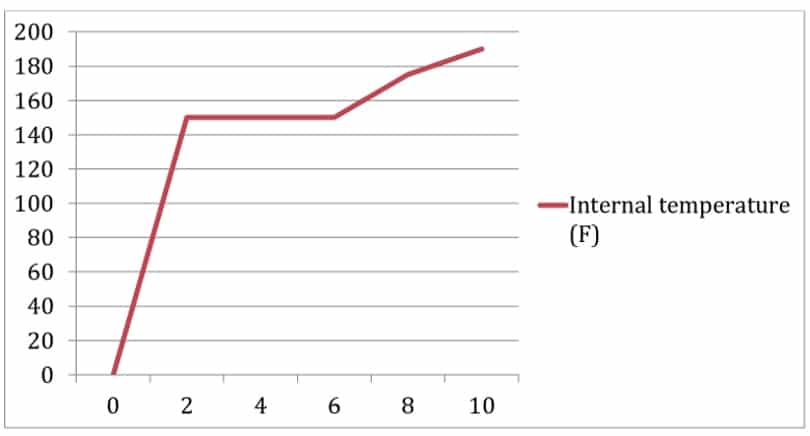
Pulled pork, for which the pork butts are popularly used, is considered to be optimally cooked when the internal temperature of the pork butt is at about 200°F and the best way to cook it is usually at low temperatures. This generally means that the meat takes longer to cook and is one of the reasons for the stall we are talking about.
Lower temperatures are preferred because they help to render out the fat contained in the meat more slowly than higher temperatures while breaking down the connective tissues as well. This allows for the meat to be shred easily when a fork and knife are taken to it.
The pork butt stall usually occurs when the internal temperature of the pork butt is between 150°F and 170°F. This stall is going to be noticeable as the steady increase in internal temperature that would have been noticed throughout the cooking process would slow down considerably or even stop completely.
Unfortunately, your meat could be stuck in this state for quite a while (as long as 7 hours), and this could be quite embarrassing if you are entertaining guests, but thankfully, there are ways to get your cooking along much quicker than waiting for 7 hours.
However, to better understand the reasoning behind the strategies employed in navigating a pork butt stall, it would be necessary to first grasp the chemistry behind the stall.
Originally, many assumed that the reason for the pork butt stall was the combination of collagen and moisture present in the meat to form gelatin, but over time, this was proven to be not so correct. It was also thought that the stall in temperature as a result of protein denaturing, but that was also wrong. Though both theories made a lot of sense, the reason for a pork butt stall was much simpler; evaporative cooling.
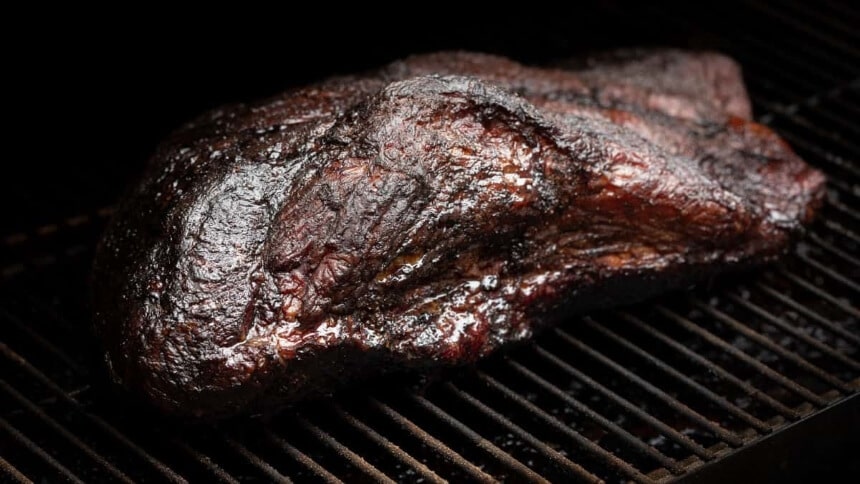
You should also note that this moisture content would have more of a say in the time the pork butt takes to cook if you’re grilling a larger piece and until all of the moisture in your piece of pork has evaporated, any rise in the temperature you might observe would only be minuscule.
Despite pointing outsize as another factor that could affect the time taken for a piece of pork butt to grill, it isn’t the only factor that plays a role in how long of a stall you might experience. As such, you would do well to also pay attention to the ingredient utilized in your pork rub, the surface area of the meat that would be exposed to the heat, and the type or shape of cut you used.
Before we get down to dealing with the stall, though, you must probably be wondering how to attain the specific temperatures that have been pointed out in this article. A thermometer could be used to measure the internal temperature of the pork as you cook, and if this appeals to you, this Waterproof Instant Read Thermometer for Outdoor Cooking and Grilling from Kizen would be perfect for deep frying meat and a BBQ.
When you first notice the stall as a beginner, it is easy to immediately assume that the heat of your grill is too low or that your grill is malfunctioning. So, you probably think the way out is to simply raise the heat or use a different grill, but the thing is, the meat is still cooking, just at a slower rate than it was initially going at. To help speed up the cooking process and beat the pork butt stall, you should consider the following ideas.
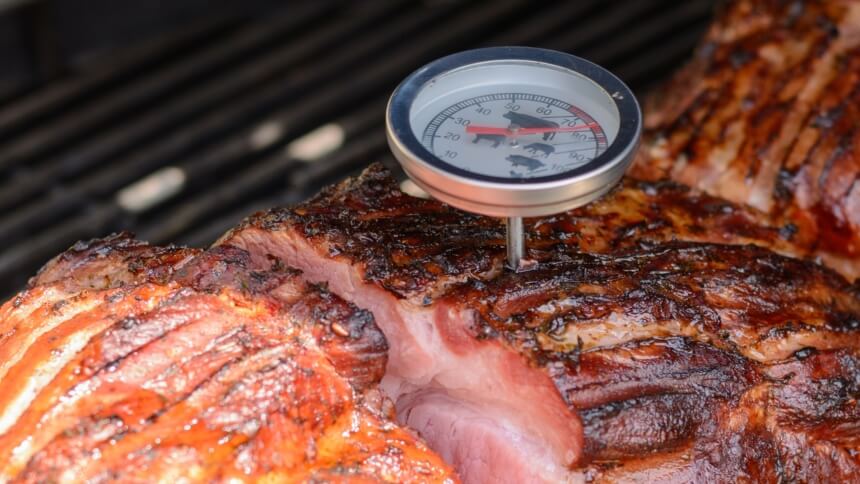
Other factors would play a part in your choice of thermometer but if you want to speed through the pork butt stall, get yourself best smoker thermometer.
With the smoker in hand, you can afford to consider raising the temperature. This is generally not the best way to go about cooking through a pork butt stall, as it tends to defeat the initial purpose of cooking at lower temperatures.

The pellet smoker has a fan that operates through convection just like an oven, and this should help speed up the evaporation process.
In fact, this effect, and the convenience it affords, is one of the reasons why pellet grills are considered more appropriate for outdoor cooking and barbeques activities. Though before making a decision on whether a pellet grill or gas grill is the right choice for you, you should do your own research.
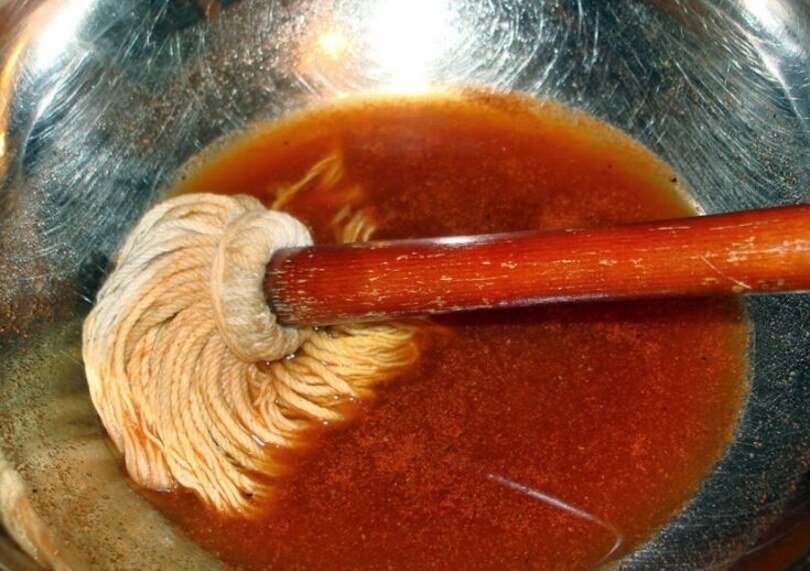
Basting would increase the evaporation time and would also cool down the temperature of the meat since they are at cooler temperatures than the partly cooked meat.
Water pans would also affect the time the stall might last because they would keep the environment within your smoker humid, and since this keeps the meat moist, a consequent increase in the time taken for the moisture to evaporate completely would be observed.
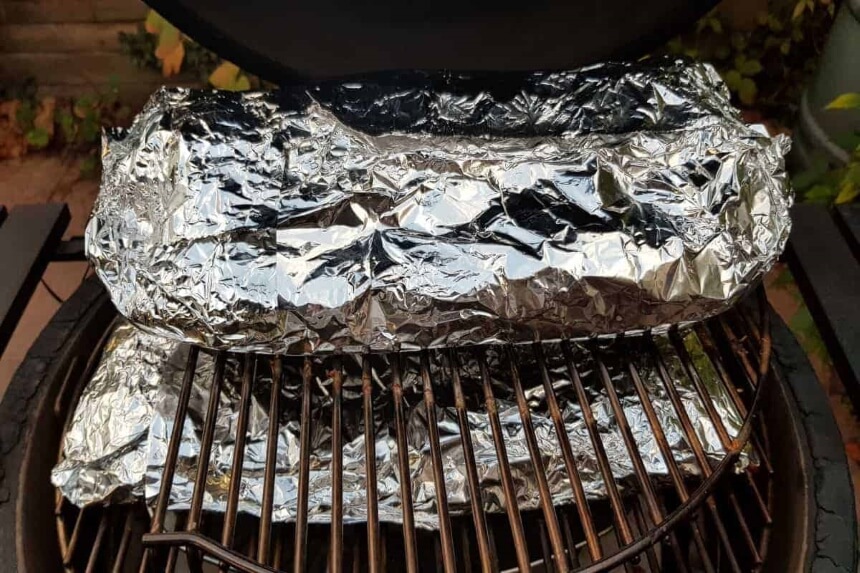
To perform the Texas crutch Trusted Source How to smoke brisket, the Texas crutch way - Chicago Tribune It’s worth mentioning that a modified version of the crutch has cropped up in Texas. Instead of wrapping in foil, Vaughn says, cooks are using pink butcher paper or barbecue paper, sometimes called peach paper. “A lot more restaurants are latching on to this, mainly because Franklin Barbecue in Austin, with its massive popularity, cooks that way.” www.chicagotribune.com , you would need to wait until the pork butt has reached the stall. Once this has happened, you should then wrap the meat in aluminum foil and spray a little helping of liquid on it before replacing it in the smoker.
Within the smoker, this liquid should turn to steam, and since the steam is covered by the foil, it should have nowhere to escape to. The interaction of the steam with the meat inside the foil would cause the internal temperature of the meat to rise faster than if it were open.
The best time to implement the Texas crutch is when the internal temperature of your pork butt is at 170°F. An alternative to aluminum foil when using this method is butcher paper, but you should know that butcher paper would still lead to the escape of some steam and a relatively slower cook than if the foil were used. Regardless of what wrapping material is used, though, the meat should be covered tightly to ensure the success of the strategy.
While you might feel the urge to remove the wrapping when the temperature starts to rise steadily again, this is not the advisable move to make. Instead, you would be better served to leave the pork butt covered until the optimum temperature of 200°F has been reached. While this would affect the quality of the bark that your pulled pork would be coming out with, it would prevent the slowing down of the cooking time that would happen if the meat is opened up before the liquid on the surface has evaporated.
However, if that bark is just as important to you or you have a lot of time still to go before serving your guests, you could put your pork butt back to grill some more. If your grill is a gas or pellet grill appropriate for searing, this is the time to utilize your searing burner.
There is an alternative to lowering the quality of your barbecue for speed; you simply wait out the stall. If this is the route you would like to go, a little more planning of your time and a lot of patience would be needed.
It might not be very convenient to wait, though, and if convenience is high on your list of priorities when grilling, the Z Grill 700D Wood Pellet Grill and its digital temperature control are exactly what you need.
Don’t think you can escape this stall by not buying a pork butt for your pulled pork. You should know that the pork butt is not the only piece of meat that experiences such a stall while on a grill. Other large cuts such as the beef brisket are also susceptible to the stall in temperature.
Lucky for you, though, if you find yourself grilling another cut of meat that’s stalling while it cooks, the same methods and ideas outlined above should work just as effectively.
However, it would do you well to remember that there are other factors affecting how long the stall might be. So, a larger cut would mean a longer stall, and the shape of the cut would have a say as well.
When making pulled pork, the best way to go about it is by slow cooking, and there’s no way you slow cook a pork butt at low temperatures without experiencing the stall we have talked about.
So, rather than looking at the experience as a frustrating one, you should see it as a necessity for a high-quality barbecue. If you want your flowers from your guests for the quality of your barbecue, the pork butt stall is a necessary obstacle.
Differences could, however, exist in the way you deal with this obstacle; you could simply wait it out and get your pork in the best possible quality, or you could utilize the Texas crutch described in this article to quicken up the process. Whichever one you use, you would still get through the stall.

